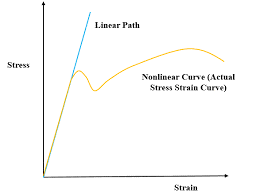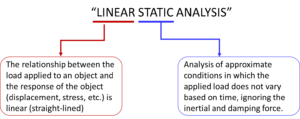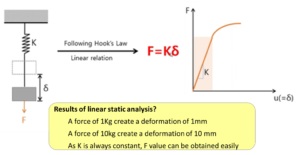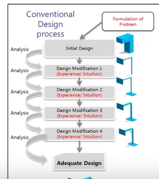Unlocking Efficiency and Stability: A Guide to Linear Static Analysis in Engineering
Linear static analysis refers to a computational technique used in engineering and structural analysis to predict the response of a structure under applied loads or forces. It assumes linear relationships between applied loads and resulting displacements, as well as linear elastic material behavior within the structure.
In linear static analysis, the governing equations of linear elasticity, such as the equilibrium equations and the stress-strain relationship described by Hooke’s law, are solved to determine the deformations, displacements, and internal forces within the structure. The analysis assumes small deformations, where the linear strain-displacement relationship holds, and it assumes that the material properties of the structure are homogeneous and isotropic.

The analysis involves dividing the structure into smaller elements, typically finite elements, and solving the equilibrium equations for each element and the connections between them. The resulting system of linear equations is then solved using numerical techniques such as the finite element method (FEM) or other matrix-based methods to obtain the displacements and internal forces.
Where
K = Stiffness matrix
U = Displacement Matrix
F = Force Matrix
Linear static analysis provides insights into the stresses, deformations, and displacement patterns within a structure, allowing engineers to evaluate its strength, stability, and safety. It is widely used in various fields, including civil engineering, mechanical engineering, aerospace engineering, and more, for designing and analyzing structures such as buildings, bridges, mechanical components, and assemblies.

Importance of Linear Static Analysis
Linear static analysis is a fundamental and widely used technique in engineering and structural analysis. It serves several important purposes and provides valuable insights into the behavior of structures.
Here are some reasons highlighting the need and importance of linear static analysis:
Predicting Structural Response: Linear static analysis helps predict the response of structures under various loading conditions. By analyzing the stresses, displacements, and deformations, engineers can assess the structural integrity and ensure that the design meets the desired criteria. It allows for evaluating the strength, stability, and safety of a structure.

Design Validation and Optimization: Linear static analysis aids in the design validation process. Engineers can verify the performance of a structure by applying expected loads and studying the resulting behavior. It enables the identification of potential design flaws, weak points, and areas of excessive stress or deformation. This information can guide design optimization and modification to enhance the performance and efficiency of the structure.
Load Distribution: Linear static analysis helps determine how loads are distributed within a structure. By studying the internal forces and stresses, engineers can understand how different components and members bear the load. This information is crucial for structural engineers to ensure that the load is properly distributed, and no individual component is subjected to excessive stress or overload.

Material Selection: Linear static analysis facilitates material selection for a structure by evaluating stress levels and deformations. Engineers can assess the suitability of different materials based on their stiffness, strength, and other mechanical properties within the linear elastic range. ANSYS Workbench, a powerful engineering simulation software, can be used to analyze the mechanical behavior of structures.
Learning ANSYS Workbench with Artem Academy can enhance engineers’ proficiency in utilizing this software for linear static analysis and other advanced engineering simulations. Artem Academy offers specialized courses that teach engineers how to effectively model and analyze structures, simulate various materials, and evaluate stress levels and deformations. By combining theoretical knowledge of material properties with practical application using ANSYS Workbench, engineers can confidently select materials that meet the specific requirements of a structure and can withstand anticipated loads and deformations within the linear elastic range.
Support System Design: Linear static analysis aids in the design of support systems, such as beams, columns, and connections. By analyzing the internal forces and deformations, engineers can determine the required sizes, shapes, and configurations of support elements. This helps ensure the stability, rigidity, and proper load transfer within the structure.
Cost and Time Savings: Linear static analysis allows engineers to assess different design alternatives quickly and cost-effectively. By simulating the behavior of a structure in a virtual environment, engineers can identify potential issues and make necessary modifications before physical prototypes or full-scale manufacturing. This iterative process saves time, reduces material waste, and minimizes the cost of physical testing and revisions.

Overall, linear static analysis is a vital tool for engineers to understand and optimize the structural behavior of a wide range of systems. It provides valuable insights for design, validation, optimization, and ensuring the structural integrity and safety of various engineering projects.





